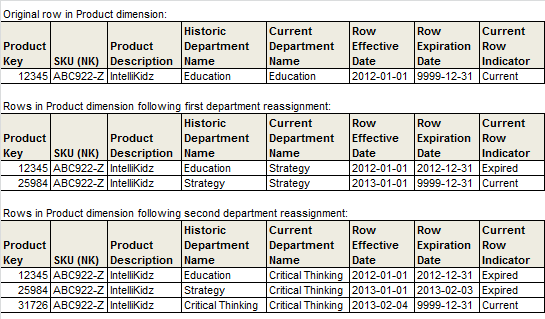When we run a session, the integration service may create a reject file
for each target instance in the mapping to store the target reject
record. With the help of the
Session Log and
Reject File we can identify the cause of data rejection in the session.
Eliminating the cause of rejection will lead to rejection free loads in the subsequent session runs. If the
Informatica Writer or the
Target Database
rejects data due to any valid reason the integration service logs the
rejected records into the reject file. Every time we run the session the
integration service appends the rejected records to the reject file.
Working with Informatica Bad Files or Reject Files
By default the Integration service creates the reject files or bad files in the
$PMBadFileDir
process variable directory. It writes the entire reject record row in
the bad file although the problem may be in any one of the Columns. The
reject files have a default naming convention like
[target_instance_name].bad .
If we open the reject file in an editor we will see comma separated
values having some tags/ indicator and some data values. We will see
two types of Indicators in the reject file. One is the
Row Indicator and the other is the
Column Indicator .
For reading the bad file the best method is to copy the contents of the
bad file and saving the same as a CSV (Comma Sepatared Value) file.
Opening the csv file will give an excel sheet type look and feel. The
firstmost column in the reject file is the
Row Indicator , that
determines whether the row was destined for insert, update, delete or
reject. It is basically a flag that determines the Update Strategy for
the data row. When the
Commit Type of the session is configured as
User-defined
the row indicator indicates whether the transaction was rolled back due
to a non-fatal error, or if the committed transaction was in a failed
target connection group.
If our source file is like this:
7,John,5000.375,76.12345,,BrickLand Road Singapore,Malasia
The data in the reject/Bad file looks like:
0,D,7,D,John,D,5000.375,O,,N,BrickLand Road Singapore,T
Now let us understand What are the extra characters meant for?
List of Values of Row Indicators:
| Row Indicator | Indicator Significance | Rejected By |
| 0 | Insert | Writer or target |
| 1 | Update | Writer or target |
| 2 | Delete | Writer or target |
| 3 | Reject | Writer |
| 4 | Rolled-back insert | Writer |
| 5 | Rolled-back update | Writer |
| 6 | Rolled-back delete | Writer |
| 7 | Committed insert | Writer |
| 8 | Committed update | Writer |
| 9 | Committed delete | Writer |
If a row indicator is 3, an update strategy expression marked the row for reject.
Now comes the Column Data values followed by their
Column Indicators, that determines the data quality of the corresponding Column.
List of Values of Column Indicators:
| Column Indicator | Type of data | Writer Treats As |
| D | Valid data or Good Data. | Writer passes
it to the target database. The target accepts it unless a database error
occurs, such as finding a duplicate key while inserting. |
| O | Overflowed Numeric Data. | Numeric data
exceeded the specified precision or scale for the column. Bad data, if
you configured the mapping target to reject overflow or truncated data. |
| N | Null Value. | The column contains a
null value. Good data. Writer passes it to the target, which rejects it
if the target database does not accept null values. |
| T | Truncated String Data. | String data
exceeded a specified precision for the column, so the Integration
Service truncated it. Bad data, if you configured the mapping target to
reject overflow or truncated data. |
The reject file and session log contain information that helps you determine the cause of the reject. You can correct reject files and load them to relational targets using the Informatica reject loader utility. The reject loader also creates another reject file for the data that the writer or target reject during the reject loading.
Complete the following tasks to load reject data into the target:
Locate the reject file.
Correct bad data.
Run the reject loader utility.
NOTE:
1. You cannot load rejected data into a flat file target
2. If you enable row error logging in the session properties, the Integration Service does not create a
reject file. It writes the reject rows to the row error tables or file.
Hope this helps.


